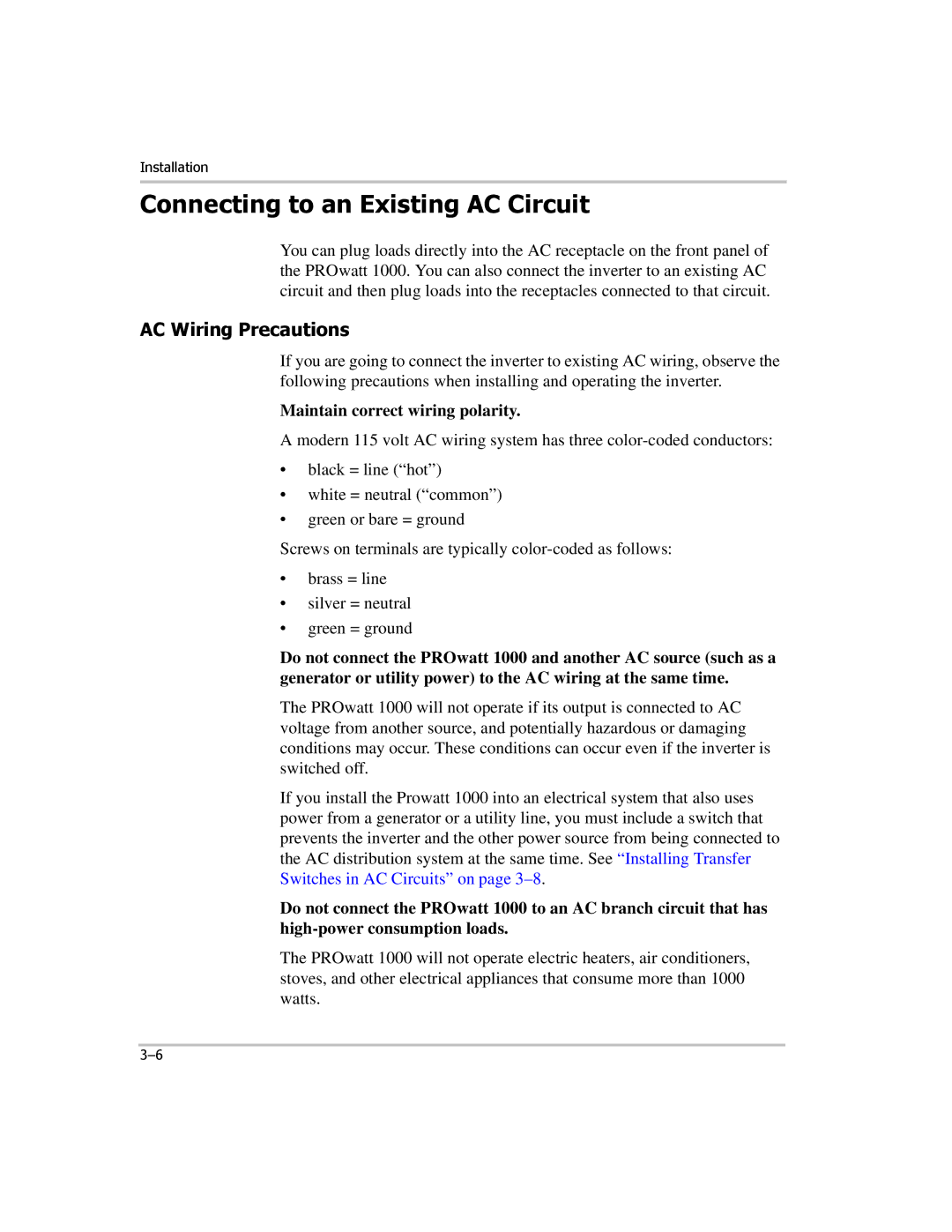
Installation
Connecting to an Existing AC Circuit
You can plug loads directly into the AC receptacle on the front panel of the PROwatt 1000. You can also connect the inverter to an existing AC circuit and then plug loads into the receptacles connected to that circuit.
AC Wiring Precautions
If you are going to connect the inverter to existing AC wiring, observe the following precautions when installing and operating the inverter.
Maintain correct wiring polarity.
A modern 115 volt AC wiring system has three
•black = line (“hot”)
•white = neutral (“common”)
•green or bare = ground
Screws on terminals are typically
•brass = line
•silver = neutral
•green = ground
Do not connect the PROwatt 1000 and another AC source (such as a generator or utility power) to the AC wiring at the same time.
The PROwatt 1000 will not operate if its output is connected to AC voltage from another source, and potentially hazardous or damaging conditions may occur. These conditions can occur even if the inverter is switched off.
If you install the Prowatt 1000 into an electrical system that also uses power from a generator or a utility line, you must include a switch that prevents the inverter and the other power source from being connected to the AC distribution system at the same time. See “Installing Transfer Switches in AC Circuits” on page
Do not connect the PROwatt 1000 to an AC branch circuit that has
The PROwatt 1000 will not operate electric heaters, air conditioners, stoves, and other electrical appliances that consume more than 1000 watts.
